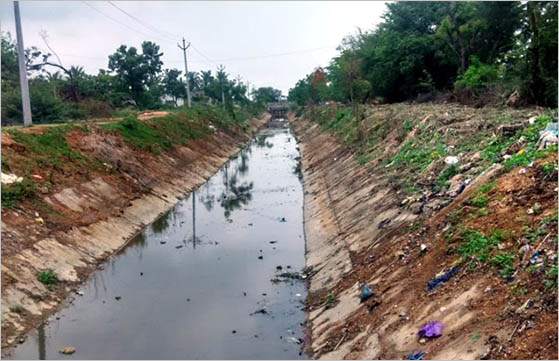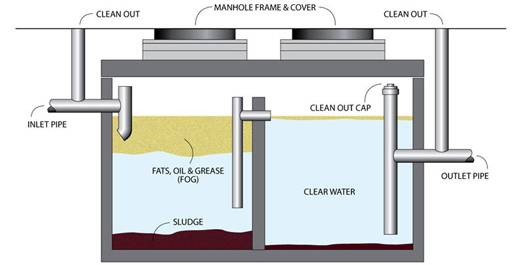Top Liquid Waste Disposal Melbourne: Trusted Services for Proper Waste Monitoring
How Liquid Garbage Disposal Works: A Thorough Introduction of Methods and Technologies Employed

Introduction of Fluid Waste Kind
The complexity of fluid waste kinds demands a detailed understanding of their qualities and effects for disposal. Fluid waste can generally be classified right into a number of types, consisting of commercial, local, farming, and contaminated materials. Each classification exhibits unique buildings, calling for details administration methods to reduce ecological and health and wellness risks.
Industrial liquid waste stems from producing processes and typically includes a range of pollutants, such as heavy metals, solvents, and organic compounds. Metropolitan liquid waste, primarily consisting of wastewater from houses and business facilities, includes natural matter, nutrients, and pathogens (industrial wastewater treatment). Agricultural liquid waste, including runoff from ranches, may have fertilizers, pesticides, and pet waste, presenting risks to water top quality and ecological communities
Harmful liquid waste is identified by its toxicity, sensitivity, or prospective to create damage. This category consists of substances like acids, bases, and specific chemicals that necessitate strict handling and disposal methods. Comprehending these varied fluid waste types is critical for developing effective disposal methods and making sure conformity with environmental laws. Appropriate category and characterization are important for applying proper treatment methods and decreasing the unfavorable influence on public health and the setting.
Physical Treatment Methods

Testing is the preliminary action, where larger particles and debris are removed from the liquid waste using displays or grates. This process safeguards downstream devices from damage and makes certain smoother operation. Following testing, sedimentation uses gravitational force to different solids from liquids. In sedimentation storage tanks, much heavier particles work out at the bottom, developing a sludge layer, while the made clear fluid can be further dealt with.
Filtering is one more essential technique that involves passing the liquid with permeable products, such as sand or membrane layers, to catch smaller particles. This action improves the high quality of the liquid, making it suitable for subsequent treatment processes.

Chemical Treatment Methods
Chemical treatment strategies are necessary for properly managing liquid waste, especially in dealing with liquified and colloidal contaminants that physical approaches may not appropriately eliminate. These methods use numerous chemical agents to counteract, precipitate, or transform harmful compounds right into much less damaging kinds.
One common technique is coagulation and flocculation, where chemicals such as alum or ferric chloride are included to advertise the aggregation of suspended bits. This procedure enhances sedimentation, permitting much easier elimination of the Click Here resulting sludge. Additionally, oxidation processes, utilizing representatives like chlorine or ozone, are used to damage down complex organic compounds and virus, providing the waste safer for discharge or more treatment.
Neutralization is one more important strategy, which adjusts the pH of acidic or alkaline waste streams to neutral levels, avoiding potential damage to downstream systems and the setting. In addition, progressed oxidation procedures (AOPs) utilize combinations of oxidants and ultraviolet light to weaken persistent contaminants, achieving a higher degree of treatment efficiency.
Biological Treatment Processes
Organic therapy procedures play an essential function in the administration of liquid waste by utilizing bacteria to disintegrate raw material and lower impurity degrees. These processes can be broadly classified into anaerobic and cardiovascular treatments, each employing specific microbial areas to achieve reliable waste destruction.
Cardiovascular treatment involves using oxygen to promote the breakdown of natural products by germs. This process is generally applied in turned on sludge systems, where oygenation storage tanks offer a conducive setting for microbial growth, resulting in the oxidation of organic toxins. The resultant biomass can be divided from treated effluent through sedimentation.
On the other hand, anaerobic treatment occurs in the lack of oxygen, depending on different microorganisms to break down raw material. This technique is particularly useful for high-strength waste, as it produces biogas, a renewable power resource, while lowering sludge production. Technologies such as anaerobic digesters are frequently utilized in municipal and commercial applications.
Both anaerobic and aerobic organic treatments not just minimize the ecological impact of liquid waste but additionally assist in resource healing, making them vital components of lasting waste management methods. Their flexibility, efficiency, and efficiency sustain their extensive execution across various markets.
Arising Technologies in Disposal
Innovative strategies to liquid garbage disposal are swiftly evolving, driven by improvements in modern technology and an enhancing focus on sustainability. Among these emerging innovations, membrane layer bioreactors (MBRs) have actually gained grip for their capacity to integrate biological treatment with membrane layer purification, causing high-grade effluent that can be reused in different applications. MBRs allow smaller sized impacts and a lot more reliable operations compared to conventional systems.
One more appealing advancement is using anaerobic digestion incorporated with nutrient click this site healing modern technologies, which not just deals with liquid waste however also creates biogas and recoups beneficial nutrients like nitrogen and phosphorus. This double benefit boosts resource effectiveness and reduces environmental impact.
Additionally, advanced oxidation processes (AOPs) are being taken on for the deterioration of complicated natural contaminants. These approaches use powerful oxidants and catalysts to break down pollutants at the molecular degree, using a highly effective remedy for tough waste streams.
Additionally, the integration of synthetic intelligence and artificial intelligence in waste administration systems is optimizing functional go right here efficiency and anticipating maintenance, causing minimized costs and enhanced ecological compliance. These modern technologies mirror a considerable change in the direction of more reliable and sustainable liquid garbage disposal techniques.
Final Thought
In final thought, effective fluid garbage disposal requires an extensive understanding of various techniques and innovations. The integration of physical, chemical, and organic therapy approaches ensures the effective monitoring of diverse waste kinds. Furthermore, the appearance of innovative innovations improves therapy efficacy and promotes sustainability in waste management practices. By constantly advancing these approaches, it ends up being feasible to deal with the growing difficulties connected with liquid waste, ultimately adding to environmental management and resource healing.
Fluid waste disposal is a critical element of ecological management, requiring an extensive understanding of different strategies and technologies tailored to different waste kinds. Fluid waste can broadly be categorized into numerous types, including commercial, community, farming, and harmful waste. Agricultural fluid waste, consisting of drainage from ranches, may include fertilizers, pesticides, and animal waste, positioning dangers to water top quality and ecological communities.
Various physical treatment methods play a vital role in managing liquid waste efficiently - industrial wastewater treatment.In final thought, effective fluid waste disposal demands a thorough understanding of different strategies and modern technologies